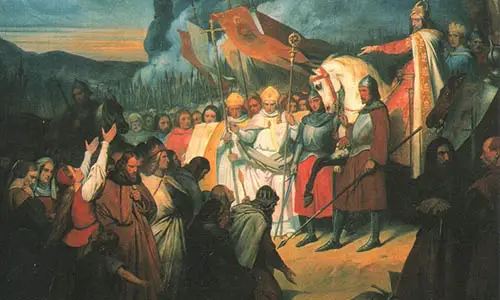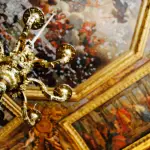Charlemagne (c. 742-814), otherwise, called Karl and Charles the Great, was a medieval period leader, who managed to rule a large part of Western Europe from 768 to 814. In 771, Charlemagne got to be ruler of the Franks, a Germanic tribe in modern-day Belgium, France, Luxembourg, the Netherlands and western Germany. He left determined to unite every single Germanic individual into one kingdom, and proselyte his subjects to Christianity. A talented military strategist, he spent much of his rule occupied with fighting keeping in mind the end goal to achieve his objectives. In 800, Pope Leo III (750-816) delegated Charlemagne sovereign of the Romans. In this part, he supported the Carolingian Renaissance, a social and scholarly recovery in Europe. When he kicked the bucket in 814, Charlemagne’s realm enveloped quite a bit of Western Europe, and he had likewise guaranteed the survival of Christianity in the West. Today, Charlemagne is alluded to, by some, as the father of Europe.
Let us go, through some quick facts about Charlemagne, as a ruler:
- Charlemagne was born around 742, the child of Bertrada of Laon (d. 783) and Pepin the Short (d. 768), who got to be lord of the Franks in 751. Charlemagne’s definite birthplace is obscure, in spite of the fact that historians have proposed Liege in modern-day Belgium and Aachen in modern-day Germany as his possible birth locations. Also, there is little information available about the ruler’s youth and education, albeit as a grown-up, he showed an ability for dialects and could speak Latin and comprehend Greek, among different dialects.
- After the death of Pepin in October 768, Charlemagne and his younger brother, Carloman were both announced Lords and were to administer the kingdom together. In the division of the domain, on the other hand, Carloman got a bigger and wealthier part. Due to these circumstances, the relations between the siblings turned sharp. However, after the unexpected death of Carloman in 771, Charlemagne became the sole leader of the whole kingdom.
- Not long after, in the wake of becoming the king and sole owner of the entire empire, he vanquished the Lombards (in present-day northern Italy), the Avars (in current Austria and Hungary) and Bavaria, among others.
- Charlemagne pursued a bleeding, three-decades long fights against the Saxons, a Germanic tribe of agnostic admirers, and earned a notoriety for savagery. In 782 at the Massacre of Verden, Charlemagne purportedly commanded the assasination of about 4,500 Saxons. He, in the long run, constrained the Saxons to change over to Christianity, and pronounced that any individual who didn’t get baptized, or adopt other Christian conventions, be killed.
- He vanquished a great part of the Saxon region venturing into what is today’s Germany. Accordingly, he is viewed as the father of the Germany Monarchy. At the solicitation of the Pope, he likewise, vanquished the Lombards in Northern Italy and took control of the area including the city of Rome. Then, he vanquished Bavaria. He, additionally, tackled battles in Spain to defeat the Moors. He got some success there and a segment of Spain turned out to be a part of the Frankish Empire.
- By 800 Charlemagne had succeeded in expanding his overlordship from the Elbe River in the upper east to south of the Pyrenees in the southwest and from the North Sea to southern Italy. He controlled the greater part of the Christianized western area, apart from the British Isles, that had once been a part of the Roman Empire. As the sworn defender of the Church, Charlemagne was indeed the political leader of Rome itself. Hence, his power, which stretched out more than an endless domain and incorporated various people groups, matched that of the Roman heads of olden times.
- According to the biography of Charlemagne “Vita Caroli Magni”, written by Einhard between 817 and 836, he was believed to be seven times the length of a foot, however, with the opening of his tomb in 1861 researchers found that his real stature was 6 feet 3 1/2 inches.
- He possessed a short, thick neck and a jutting paunch. He took incessant practice on horseback and delighted in incredible wellbeing for a large portion of his life. He was very jovial by nature.
- As indicated by Einhard, Charlemagne was healthy until the last four years of his life, when he regularly experienced fevers and obtained a limp.
- In 813, Charlemagne delegated his child Louis the Pious (778-840), ruler of Aquitaine, as co-sovereign. Louis got to be sole sovereign when Charlemagne kicked the bucket in January 814, closure his rule of over four decades. At the time of his demise, his realm included much part of Europe.
- Charlemagne was buried at the church in Aachen. In the resulting decades, his domain was separated up among his beneficiaries, and by the late 800s, it had broken up. In 1165, under Emperor Frederick Barbarossa (1122-1190), Charlemagne was beatified for political reasons; in any case, the congregation today does not perceive his sainthood.











Leave a Reply